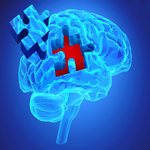On any given day at Harmony you can witness life’s challenges and know that a compassionate soul is there to help along the path of healing. The mental health professionals are part of a team at Harmony and work with clients in a way that combines the natural beauty of our campus with the intrinsic values of each client.
To further explain how we know being in nature can help heal, I’d like to share a study out of Stanford University which suggests that time spent in natural settings may improve brain health.
“As more and more of us live in cities, we spend less time in natural settings, including parks. Studies also show that people in urban settings without access to green spaces have higher levels of psychological problems than those with access to green spaces. Is there a definitive connection between time spent in green spaces and mental health? The answer is yes. In a series of two studies, Stanford researchers believe there is a connection between time spent in green spaces and a decrease in “morbid rumination,” what is more commonly thought of as brooding over the negative aspects of our lives.”
“This study investigated the impact of nature experience on affect and cognition. We randomly assigned sixty participants to a 50-min walk in either a natural or an urban environment in and around Stanford, California. Before and after their walk, participants completed a series of psychological assessments of affective and cognitive functioning. Compared to the urban walk, the nature walk resulted in affective benefits (decreased anxiety, rumination, and negative affect, and preservation of positive affect) as well as cognitive benefits (increased working memory performance). This study extends previous research by demonstrating additional benefits of nature experience on affect and cognition through assessments of anxiety, rumination, and a complex measure of working memory (operation span task). These findings further our understanding of the influence of relatively brief nature experiences on affect and cognition, and help to lay the foundation for future research on the mechanisms underlying these effects.”
The study further asks, what does this mean for everyone?
1. “Spend Time in Natural Settings – What can it hurt to take a daily walk in the park or spend time sitting on your back porch looking at the creek (if you’re lucky enough to have that situation)? Take your lunch to a natural setting and spend vacation time at least partially in the outdoors. Doing so will immediately improve your mental health.
2. Move – Movement is good for us. No doctor in the world says that it’s healthy to sit at home and do nothing. But instead of going to the gym, find a nature trail to hike or bike, golf, or take a stroll in the green belt. Even if you don’t get your heart rate up to aerobic activity levels, you’ll still mentally benefit from the movement.”
The healing journey for a client at Harmony can include a client expressing their emotions in a calmly lit room, moving forward on a walk to the river at Rocky Mountain National Park or learning a really cool coping skill. One of many examples of coping skills taught to clients is called 5,4,3,2,1 where one is taught to evoke all five senses. This is a great coping skill where a client is taught to tap into all 5 senses within as a viable resource. Another experience often happening at Harmony is witnessing clients as well as staff simply spending time with Cooper, our therapy dog.
As a mental health provider at Harmony, I have noticed clients seemingly more calm during sessions when we are taking a walk together in nature. I believe they appreciate the fact we are walking and talking side by side as opposed to sitting across from one another. Clients have stated, “Wow, this is better than sitting in an office, this is a nice place to get treatment.”
Since Harmony offers outings each week at an indoor climbing gym or hike in the park, depending on the weather, clients are able to take advantage of the natural beauty and the healing attributes of moving Harmony has to offer.
Harmony is a special place that helps client’s feel safe, accepted and cared about. For some on their path of healing it is a beginning, for others it is a renewal; for all whose path includes a stay at Harmony, it is a step toward healing in the arms of nature’s embrace.
Kelly Baker, MA, LAC, LPC, NCC
Mental Health Professional, Harmony Foundation, Inc.
References:
http://well.blogs.nytimes.com/2015/07/22/how-nature-changes-the-brain/?mwrsm=Facebook&fb_ref=Default&_r=0
http://www.pnas.org/content/112/28/8567.abstract
http://www.sciencedirect.com/science/article/pii/S0169204615000286
http://www.girlscouts.org/











